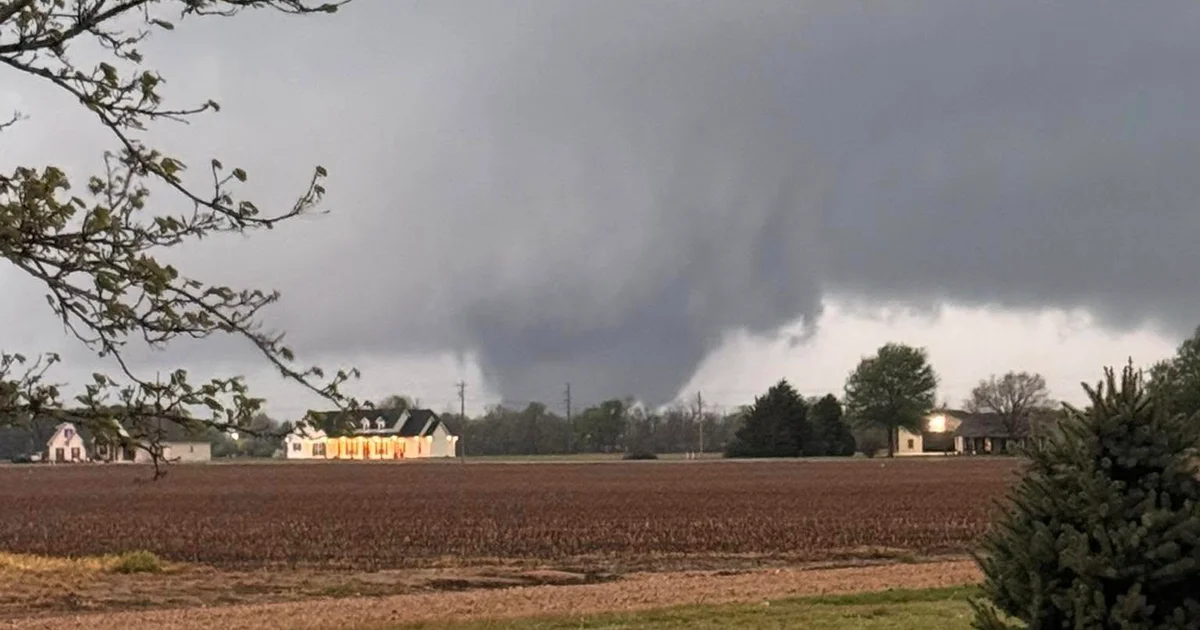April 2, 2025 / 10:13 PM EDT / CBS/AP
Tornadoes and violent storms struck parts of the South and Midwest on Wednesday, knocking down power lines and trees, ripping roofs off homes and shooting debris thousands of feet into the air as a swath of severe weather hit the region.
The National Weather Service issued a tornado emergency, the most severe type of warning that exists, in Lake City, Arkansas — meaning there was a large tornado on the ground causing damage in a populated city.
The agency has received at least 11 tornado reports by Wednesday evening, with nine of them across Missouri and two in Arkansas. Eastern Arkansas, southern Illinois, southern Indiana, western Kentucky, southeast Missouri, northern Mississippi and western Tennessee are all under a particularly dangerous situation: tornado watch through midnight CT.
“It’s definitely going to be a really horrible situation here come sunrise in the morning in those areas, coming out of Arkansas,” Chelly Amin, a meteorologist with the weather service, said.
A video posted to social media by Lake City resident Matthew Fraser shows what appears to be a tornado moving across the area as flashes of lightning turned the plume of storm pink and purple with each strike.
Posted by Matthew Fraser on Wednesday, April 2, 2025
It was not immediately clear whether there were any injuries.
In Pilot Grove, Missouri, several structures were damaged, cars flipped over and power poles snapped by a storm, said the state emergency management agency. It wasn’t immediately known if there were injuries. Meanwhile, roads were closed because of storm debris and downed utility lines near the town of Potosi southwest if St. Louis, according to the state transportation department.
Authorities in eastern Missouri were trying to determine whether it was a tornado that damaged buildings, overturned vehicles and tore down utility poles, tree limbs and business signs Wednesday morning in and around the city of Nevada.

Another tornado touched down in the northeastern Oklahoma city of Owasso about 6:40 a.m. Wednesday, according to the weather service office in Tulsa. There were no immediate reports of injuries, but the twister heavily damaged the roofs of homes and knocked down power lines, trees, fences and sheds.
Storms may continue for several more hours overnight, and the severe weather event could bring several EF3+ tornadoes by Thursday.
While Thursday’s severe weather threat goes from 5 out of 5 to 3 out of 5, we could still see strong tornadoes — from Texarkana through Little Rock to Memphis. Friday’s severe weather threat will be in almost the same area, with a little nudge to the north, and Saturday’s severe weather threat will be in the same area with a little nudge to the south.
It’s considered rare to have the same city in at least a 3 out of 5 severe weather risk for four consecutive days, with Pine Bluff, Arkansas, having the dubious distinction.
In addition to the four consecutive days of severe weather, there will also be four consecutive days of torrential rain, and that will lead to potentially historic flooding in parts of the South and Midwest, forecasters warned.
Forecasters attributed the violent weather to daytime heating combining with an unstable atmosphere, strong wind shear and abundant moisture streaming into the nation’s midsection from the Gulf.
With more than a foot of rain possible over the next four days, the prolonged deluge “is an event that happens once in a generation to once in a lifetime,” the weather service said in one of its flood warnings. “Historic rainfall totals and impacts are possible.”
The flood fears come as residents in parts of Michigan continued to dig out from a weekend ice storm.
High winds with gusts of up to 50 mph were expected across large parts of the Midwest. In Indiana, an extreme wind gust blew over five semitrucks on Interstate 65 near Lowell, state police reported. No one was hurt.
The ominous forecast comes nearly two years to the day that an EF-3 tornado struck Little Rock. No one was killed, but that twister caused major destruction to neighborhoods and businesses that are still being rebuilt today.
More than 90 million people are at some risk of severe weather in a huge part of the nation that stretches from Texas to Minnesota and Maine, according to the Oklahoma-based Storm Prediction Center.
David Parkinson contributed reporting.
